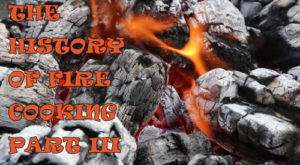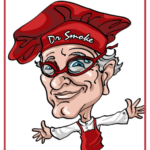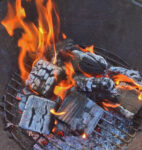Wed 28 Feb 2018
THE HISTORY OF FIRE COOKING PART III
Posted by DrSmokeRead other related stories: Cooking With Wood , General Smoking Information
No Comments
THE HISTORY OF FIRE COOKING PART III


In Part I, we covered scientific theories on how cooking with fire began approximately 2 million years ago.
Part II, we presented information on how our bodies developed from the introduction of cooking meat. THE HISTORY OF FIRE COOKING PART III, we delve into the early risks of cooking with fire and gender roles.the history of fire cooking part III
The History of Fire Cooking Part III- It May Not Have All Been Good
Although we’ve discussed the benefits of the discovery of fire for cooking, including the higher caloric content needed for survivability, there are other effects to fire cooking that aren’t so positive. This is a relatively new focus in research concerning fire cooking and human evolution.
A USA study suggests that a genetic mutation may be present in modern humans that allows certain toxins, including those found in smoke, to be metabolized at a safe rate. This genetic mutation was not found in other primates like the Neanderthals or hominins. Breathing toxins found in smoke can increase the risk of respiratory infections, suppress one’s immune system, and even cause disruption in the reproductive system. It is possible that by having this genetic mutation, the tolerance to smoke toxins was a needed adaption that gave early humans the ability to survive in this very toxic environment.
Closeness Brings Disease
We also know that fire allowed for not only cooking but warmth, light, and protection. To gain the positives of fire, early humans would gather together in close proximity to one another. A 2016 study suggests that with the advancement of fire’s uses, people remained in huddled groups for long periods of time, suffered persistent coughing resulting from the smoke toxins, and subsequently damaged the lungs. This may be what spurred the spread of tuberculosis which some scientists believe emerged 70,000 years ago. In fact, most scientists believe that fire was regularly used around 400,000 years ago, thus supporting the advent of tuberculosis.
Other scientists believe the use of controlled fire introduced additional airborne diseases. Plus, many opine that the early days of exposure to inhaling smoke from open fires stimulated our discovery of smoking tobacco. Without question, these believers feel that climate changes resulted from the ongoing burning of carbon. For them, biological and environmental changes co-mingle.
Gender Identities
It is amazing that in those early years of fire discovery the establishment of gender roles occurred and seems to have held in general theory. As tools developed and cooking with fire expanded, men did the hunting and women stayed with the fire, maintaining it and cooking previously hunted and foraged foods on/over it.
Although today both males and females hunt, the number of men still outweighs the woman. Despite the number of male chefs outnumbering the women, women still dominate as the primary cook in the home. Yet, males still barbecue and grill in a greater number.
It seems clear that there are other influences on the roles men and women play when it comes to fire cooking around the world. Finally, in Part IV of our series, we’ll explore the variations in method and technique from around the world. Finally, we hope you enjoyed THE HISTORY OF FIRE COOKING PART III blog.

History of wood fired Cooking Part III
Purchase products:
Wood Chunks- Double & Single Filet

More Related reading on “What Wood for Smoking” and other great smoking and grilling tips and techniques
Additional reading:
-THE HISTORY OF FIRE COOKING PART II
-THE SMOKINLICIOUS® STORY
-GRILL-BUILDING THE PERFECT COOKING FIRE- PART II

Dr Smoke- “Part III of our ongoing series on the history of fire cooking focuses on the early risks and how they shaped today’s food cooking practices.”



